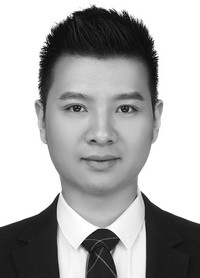ACCOUNT OF THE FUNCTIONAL STATE INDICATORS OF MEN 40-60 YEARS OLD LEADING A SEDENTIAL LIFE DURING PHYSICAL AND RECREATION CLASSES WITH ELEMENTS OF MARTIAL ARTS
Keywords:
functional state, heart rate variability, physical culture and health-improving classes, martial arts, pedagogical experiment.Abstract
Objective of the study was to take into account and evaluate the indicators of the functional state of men aged 40-60 years, leading a sedentary lifestyle, in the process of physical education and recreation classes with elements of martial arts.
Methods and structure of the study. The method of cardiointervalometry was used to monitor the functional state. The experiment involved 60 men aged 40-60 years (48.07±6.22), who were divided into experimental (EG) and control (CG) groups of 30 people. The EG attended physical culture and health-improving classes with elements of martial arts. Representatives of the CG were engaged in a different program, the basis of which was running in an aerobic mode.
Results and conclusions. At the end of the one-year experiment, significant differences were revealed in 13 out of 15 HRV parameters of men from the EG and one parameter of HRV in representatives of the CG (p<0.05; p<0.01). The analysis of intergroup differences in HRV indicators after the experiment showed that in men from the EG, compared with the representatives of the CG, 10 of the 15 studied parameters changed significantly. Special attention should be paid to such an indicator of HRV as the Stress Index (SI), which differs significantly between groups, the difference was 131.55% (p<0.01). The most pronounced changes affected the indicator of the activity of regulatory systems, the difference in the average parameters for the group was 155.7% (p<0.01). Thus, the positive effect of physical culture and health-improving activities with elements of martial arts on the cardiovascular system of men aged 40–60 years who lead a sedentary lifestyle was determined.
References
Blinkov S.N., Levushkin S.P., Kosikhin V.P. Zdorovye kak osnovopolagayushchiy komponent razvitiya chelovecheskogo kapitala [Health as a fundamental component of the development of human capital]. Uchenye zapiski universiteta im. P.F. Lesgafta. 2021. No. 9 (199). pp. 11-14.
Gorelov A.A., Rumba O.G., Baytlesova N.K. Dvigatelnaya aktivnost kak faktor povysheniya rabotosposobnosti zhenshchin vtorogo perioda zrelogo vozrasta, rabotayushchikh prepodavatelyami vuzov [Motor activity as a factor in improving the performance of women in the second period of adulthood working as university teachers]. Uchenye zapiski universiteta im. P.F. Lesgafta. 2012. No. 9 (91). pp. 50-57.
Kachenkova E.S., Krivitskaya E.I. Optimizatsiya funktsii vneshnego dykhaniya i obshchey rabotosposobnosti muzhchin 50-60 let sredstvami ozdorovitelnoy trenirovki [Optimization of the function of external respiration and general performance of men aged 50-60 by means of health-improving training]. Uchenye zapiski universiteta im. P.F. Lesgafta. 2020. No. 3 (181). pp. 200-203.
Lubysheva L.I., Khubbiev Sh.Z., Selyukin D.B. Sportizatsiya kak faktor vovlecheniya naseleniya v massovuyu sportivnuyu podgotovku [Sportization as a factor of population involvement in mass sports training]. Teoriya i praktika fizicheskoy kultury. 2020. No. 3. pp. 100-101.
Savin S.V., Stepanova O.N. Programmy funktsionalnoy fitnes-trenirovki: soderzhaniye, konstruirovaniye, osobennosti realizatsii [Functional fitness training programs: content, design, implementation features]. Izvestiya Tulskogo gosudarstvennogo universiteta. Fizicheskaya kultura. Sport. 2016. No. 4. pp. 84-90.
Fedorova O.N., Saykina E.G. Ozdorovitelnaya rol akvaaerobiki dlya zhenshchin zrelogo vozrasta [The health-improving role of water aerobics for women of mature age]. Kultura fizicheskaya i zdorovye. 2011. No. 6. pp. 51-54.
Cherkashin I.A., Okhlopkov P.P., Cherkashin E.V. Fizicheskaya podgotovka sportsmenov v udarnykh vidakh sportivnykh yedinoborstv: kikboksing K1 i tayskiy boks [Physical training of athletes in percussion types of martial arts: K1 kickboxing and Thai boxing]. Teaching aid. Yakutsk: Izdatelskiy dom Severo-Vostochnogo federalnogo universiteta publ., 2019. 92 p.
World Health Organization. Obesity and overweight. Fact Sheet No 311, 2015 [cited 2020 April 01]. Available from: URL: http://www. who.int/mediacentre/factsheets/fs311/en/.

Additional Files
Published
Versions
- 25-08-2022 (2)
- 25-08-2022 (1)

